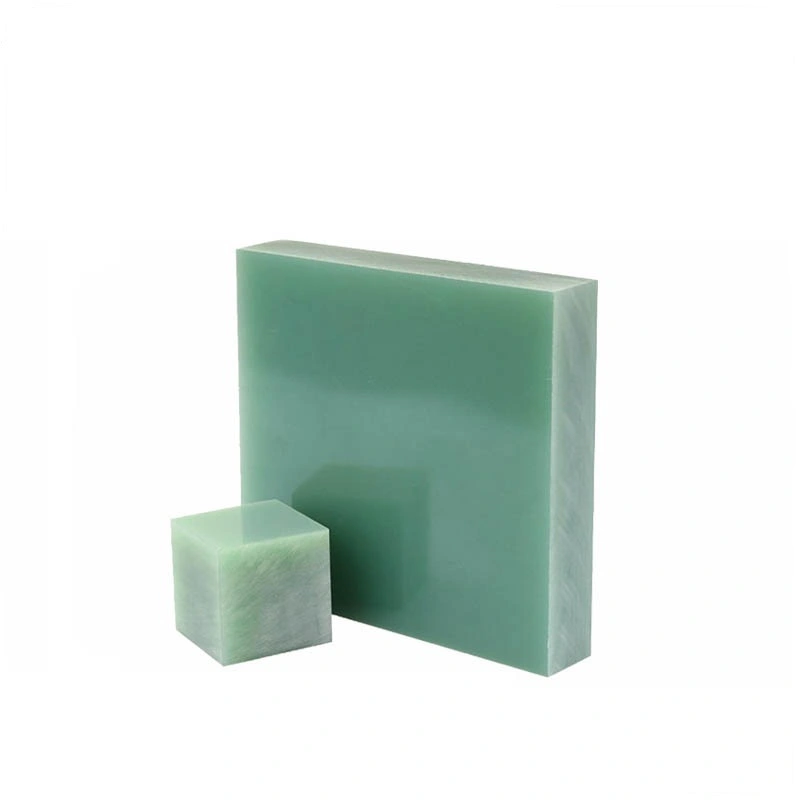Dielectric Properties: Insulation Performance and Electrical Characteristics
Dielectric Constant and Its Significance
The dielectric constant, also known as relative permittivity, is a crucial factor in determining the insulating performance of FR4 and G10 sheets. FR4 typically has a dielectric constant ranging from 4.2 to 4.8, while G10 exhibits values between 4.5 and 5.2. This slight difference can impact signal propagation and impedance control in high-frequency applications. Engineers must consider these values when designing circuits that require precise impedance matching or when working with sensitive analog components.
Dissipation Factor and Energy Loss
The dissipation factor, or loss tangent, is another essential dielectric property that measures the energy loss in the material. FR4 sheets generally have a dissipation factor of 0.02 to 0.03 at 1 MHz, while G10 sheets exhibit values around 0.025 to 0.035. Lower dissipation factors are desirable for high-frequency applications as they minimize signal attenuation and heat generation. The slightly lower dissipation factor of FR4 makes it a preferred choice for many printed circuit board applications where signal integrity is paramount.
Breakdown Voltage and Insulation Strength
Both FR4 and G10 sheets offer excellent electrical insulation properties, with breakdown voltages typically exceeding 50 kV/mm. However, G10 often exhibits a slightly higher breakdown voltage, making it suitable for high-voltage applications where enhanced insulation strength is required. This characteristic makes G10 sheets an excellent choice for power distribution systems and industrial machinery where electrical safety is a top priority.
Moisture Resistance: Durability in Humid Environments
Water Absorption Rates
Moisture resistance is a critical factor in determining the long-term reliability of insulating materials. FR4 sheets typically exhibit water absorption rates of 0.10% to 0.15% after 24 hours of immersion, while G10 sheets show slightly lower rates, ranging from 0.08% to 0.12%. This subtle difference can be significant in applications where exposure to moisture is a concern, such as in marine environments or outdoor electrical enclosures. The lower water absorption rate of G10 contributes to its superior dimensional stability and electrical performance in humid conditions.
Impact on Electrical Properties
Moisture absorption can significantly affect the electrical properties of insulating materials. As water molecules penetrate the material, they can alter its dielectric constant and increase its dissipation factor. FR4 sheets may experience a more pronounced change in electrical properties when exposed to moisture compared to G10 sheets. This characteristic makes G10 a preferred choice for applications where maintaining consistent electrical performance in varying humidity levels is crucial, such as in aerospace and defense industries.
Long-term Reliability in Humid Environments
The superior moisture resistance of G10 sheets contributes to their enhanced long-term reliability in humid environments. While both FR4 and G10 sheets are treated with moisture-resistant resins, G10's lower water absorption rate helps prevent delamination and maintains its structural integrity over extended periods. This property is particularly valuable in applications where insulating materials are exposed to cyclic temperature and humidity changes, such as in outdoor electrical equipment or automotive components.
Thermal Stability: Performance Under Heat Stress
Glass Transition Temperature (Tg)
The glass transition temperature (Tg) is a critical parameter that indicates the point at which a material transitions from a rigid to a more flexible state. FR4 sheets typically have a Tg ranging from 130°C to 140°C, while G10 sheets boast higher values, often exceeding 150°C. This higher Tg gives G10 sheets an advantage in applications involving elevated temperatures, as they maintain their mechanical and electrical properties more effectively under heat stress. Industries such as aerospace, automotive, and industrial manufacturing often prefer G10 sheets for their superior thermal stability in high-temperature environments.
Coefficient of Thermal Expansion (CTE)
The coefficient of thermal expansion (CTE) measures how much a material expands or contracts with temperature changes. FR4 sheets typically have a CTE of around 14-16 ppm/°C in the x and y directions, while G10 sheets exhibit slightly lower values, ranging from 12-14 ppm/°C. This lower CTE makes G10 sheets more dimensionally stable across a wider temperature range, reducing the risk of warping or stress on components in applications where thermal cycling is common. The enhanced dimensional stability of G10 is particularly beneficial in precision instruments and high-reliability electronic systems.
Thermal Conductivity and Heat Dissipation
While both FR4 and G10 sheets are considered thermal insulators, their thermal conductivity can impact heat dissipation in electronic assemblies. FR4 sheets typically have a thermal conductivity of 0.25-0.3 W/mK, while G10 sheets exhibit slightly higher values, around 0.3-0.35 W/mK. This marginal difference can be significant in applications where efficient heat management is crucial, such as in power electronics or high-density circuit boards. The improved thermal conductivity of G10 sheets can contribute to better overall system reliability by facilitating more effective heat dissipation from components.
Conclusion
In the comparison of FR4 sheet vs G10 sheets, both materials demonstrate exceptional insulating properties suitable for a wide range of applications. FR4 excels in flame retardancy and is widely used in printed circuit boards, while G10 offers superior mechanical strength and thermal stability. The choice between these materials ultimately depends on the specific requirements of your application, considering factors such as dielectric properties, moisture resistance, and thermal performance. By carefully evaluating these characteristics, engineers and manufacturers can select the optimal insulating sheet to ensure the reliability and efficiency of their electronic and industrial systems.
Contact Us
For more information about our high-quality FR4 and G10 sheets, or to discuss your specific insulating material needs, please don't hesitate to contact our experienced team at info@jhd-material.com. Our experts are ready to help you find the perfect solution for your project.
| Product name | G10 | FR4 |
| Picture | ||
| Temperature resistance | 125℃ | 135℃ |
| Flame retardant grade | UL94-V1 | UL94-V0 |








